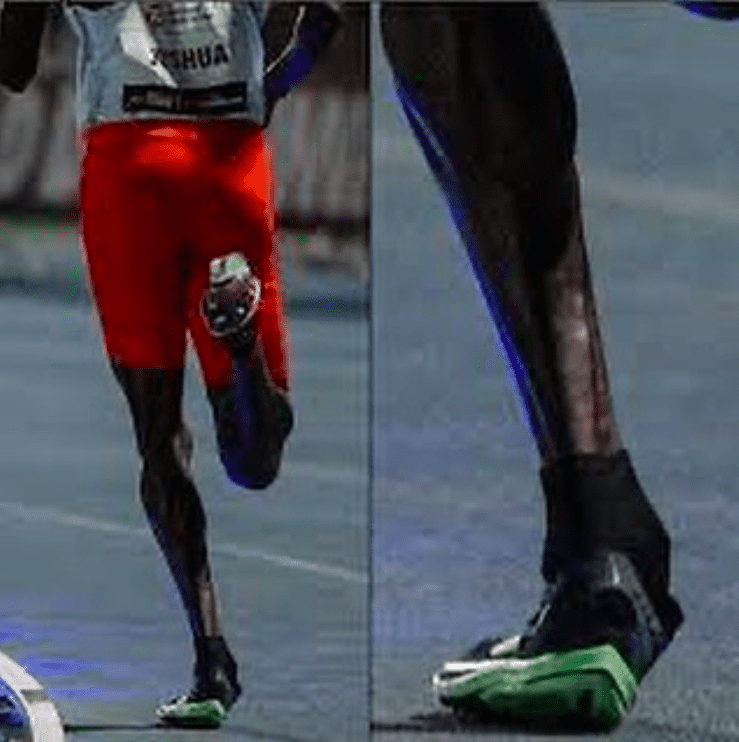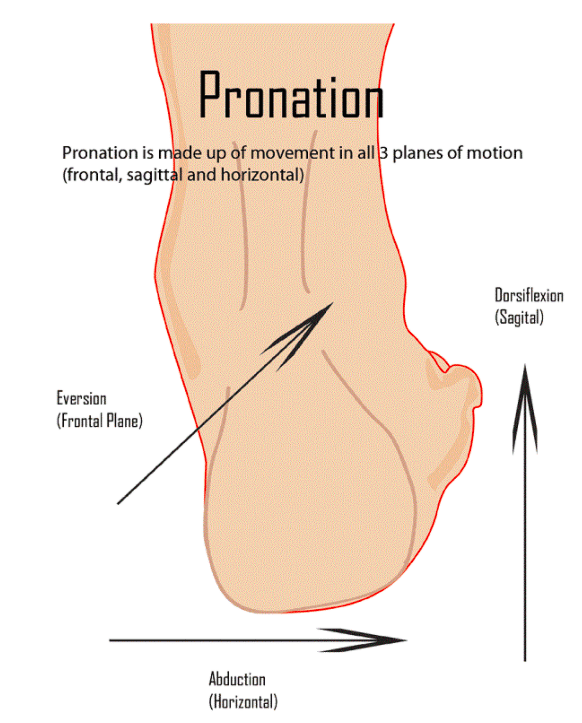
It’s the Ankle
My left leg has some problems. I could fill in the whys with any number of stories — the many ankle sprains during my athletic career, the torn and hamstring-repaired ACL, the pigeon toe I gave myself because of a boy I had a crush on in middle school, the collapsed foot — or connect causation to the pelvis, hip, and posture. Instead, though, I will simply point out a definite comparative lack: ankle pronation. My left side is my stable and stand up leg, allowing my right to be more mobile and my go down leg. The legs work in pairs. They are a team. I must point out before going further that getting symmetry is NOT necessarily the goal. I am simply looking at variables, and then seeing how manipulating those variables affects the system.
What is ankle pronation?
A demonized action in which the ankle drops in or folds laterally toward the midline.

Photo is of a right foot.
Pronation is typically something labeled at the foot. It is something in which the foot loses integrity. On the contrary, ankle pronation keeps both structural and functional integrity and allows for efficient elasticity and improved performance. This was first shown to me by Adarian Barr. Elite athletes utilize this mechanism, and yet it is labeled as ‘bad form’ for the general population.

Adarian breaks down how ankle pronation allows a runner to glide:
Developing Ankle Pronation
I am a huge believer that mobility (and natural allowance of that mobility) must be contextual. That is, it must be looked for and implemented in many different orientations and scenarios. When position, load, sequence, and driver are intentionally manipulated over a long period of time — in frequent “pokes” throughout activity and rest over high intensity ‘sessions’ — our attention notices rather than forces. We can find the simple and easy, which builds consistency: the key to long-term change.
To start, I have found that placing the leg out wide and trying to spread the pinky seems to bring out natural ankle pronation:
View this post on Instagram
Hip extension also seems to organically encourage the action:
View this post on Instagram
Ankle pronation brings the leg back to the midline.
Another Plane of Ankle Mobility
The go-to of ankle mobility is building dorsiflexion. Even when a lateral element is added, such as wall-windshield wipers, the heel and foot are cued to ‘stay put’. In actual lateral motion, the heel and outer edge of the foot will do what it needs to auto-adjust to the needs and abilities of the system. Furthermore, a lateral limitation in one place can provoke issue in another.
Case in point: snow shoveling last week. The motion I used was very similar to speed-skating: a lateral push and slide with the lower body, ending up with a push and scoop with the upper. The back leg picked up and the finish was on a singular ‘braking’ leg. After several hours and about eight inches of snow removal, I developed a ‘pinch’ in my medial knee that lasted through the next morning. One to address things instead of ignore, I used some ground traction to open up the area, with a very deliberate lift (torque) of the heel:
View this post on Instagram
Feeling this improvement, I dug a little deeper:
After, a quick hip drop-knee raise showed the heel wanted to lead.
Twisting through the Ankle & Performance
The inner ankle and heel work together to provide elasticity and leverage. Instead of simplifying the heel action to simply pumping up and down, consider it as also a rudder that directs left to right. (For those that know Barr and his work, this is a class one lever working in multiple directions). Imagine two pistons running alongside the lower leg. One is tethered to the outside, one inside, and the shin is sandwiched in-between. Ankle pronation and the fifth metatarsal swap lift up and drop down positions as the foot hits and propels the body through the ground.
One way to start playing with loading this action in a controlled manner is what I call the “Ankle Pronation Lunge”. Both heels twist in to try and utilize the inner ankle as part of the pressurized drop system:
I use a step to allow the front ankle to drop, and give more focus to the back foot which is setting up hip extension. In the last clip, I am simulating a push-off start from the blocks. I wanted to know how the front leg cycle would be affected and what kind of forward snap I could get. Note the confusion that occurs with the left leg back. It is typically my front leg in a start stance.
GOING FORWARD INSTEAD OF UP
Finally, without rotation, the body will run out of available space and pop up instead of continue going forward. There is a set stopping point with the toes, ankle, and knee (even for those with the greatest mobility) that will force the body off the ground, minimizing its more efficient glide through it. The twist through the heel and ankle allow perpendicular motion to continue rather than force it parallel because of linear folds:
The final clip contrasts the action happening from the hip. Opening high rotates the pelvis away from forward. Even with hips square, the body will go up unless you stay squatted. Sunken hips snap the body forward through the glute instead of up towards the ceiling.



